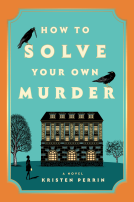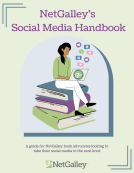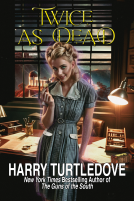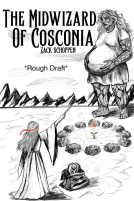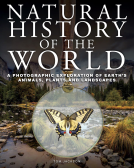
Travels with Trilobites
Adventures in the Paleozoic
by Andy Secher
This title was previously available on NetGalley and is now archived.
Send NetGalley books directly to your Kindle or Kindle app
1
To read on a Kindle or Kindle app, please add kindle@netgalley.com as an approved email address to receive files in your Amazon account. Click here for step-by-step instructions.
2
Also find your Kindle email address within your Amazon account, and enter it here.
Pub Date Jun 21 2022 | Archive Date Aug 10 2022
Talking about this book? Use #TravelswithTrilobites #NetGalley. More hashtag tips!
Description
In Travels with Trilobites, Andy Secher invites readers to come along in search of the fossilized remains of these ancient arthropods. He explores breathtaking paleontological hot spots around the world—including Alnif, Morocco, on the edge of the Sahara Desert; the Sakha Republic, deep in the Siberian wilderness; and Kangaroo Island, off the coast of South Australia—and offers a behind-the-scenes look at museums, fossil shows, and life on the collectors’ circuit. The book features hundreds of photographs of unique specimens drawn from Secher’s private collection, showcasing stunning fossil finds that highlight the diversity, complexity, and beauty of trilobites. Entertaining and informative, Travels with Trilobites combines key scientific information about these captivating creatures with wry, colorful observations and inside stories from one of the world’s most prolific collectors.
A Note From the Publisher
With forewords by Niles Eldredge, Mark Norell, and Kirk Johnson.
Advance Praise
"Andy Secher’s passionate paean to his beloved trilobites is a visually stunning voyage of discovery—a fossil feast for the eyes and fodder for the inquiring mind! Like the best of journeys, this one wanders in leisurely fashion, taking in the spectacular sights and leading us down fascinating narrative side roads to reveal the secrets of these long-vanished denizens of ancient seas. Take the trip . . . and be prepared to join the ranks of those of us already under the spell of trilobite-o-philia!"
--Dave Rudkin, assistant curator of invertebrate paleontology (retired), Royal Ontario Museum
Available Editions
| EDITION | Other Format |
| ISBN | 9780231200967 |
| PRICE | $39.95 (USD) |
Average rating from 16 members
Featured Reviews
 Reviewer 762493
Reviewer 762493
For some reason, all I keep thinking of is that one day, very, very long ago, there was a very last trilobite in the ocean. It didn't know anything about the history of its kind, or even of its species. It wasn't aware that it was the final one there would ever be, but once it died, no creature of its kind ever existed again.
You could say that about all extinct species, I guess; but trilobites weren't *one* species. They were over 25,000 species, according to what we know today. They started swimming in the oceans probably about 521 million years ago, and kept on swimming them for 270 million years. Which means the very last trilobite lived closer in time to us than to the very first trilobite - and they still all died out before the dinosaurs.
...I can't handle so much time. I can't compute it. I'm trying to put it in terms of distance: if every year is a millimeter, then the first trilobite is 521 kilometers away, and the very last one is 252 kilometers away. The first dinosaur is 240 kilometers away, and the last dinosaur is 66 kilometers away. None of them are within walking distance. And the first human is 300 meters away, which is a short stroll. And the Egyptian pyramids are built a room's length away.
I don't know how I feel about all this.
Anyway. Trilobites. They were arthropods, which means they're distant cousins to both scorpions and butterflies, which really brings home how different they might have been from any of the creatures we have today. They swam the seas. They had exoskeletons, and they molted. Some were very spiny, while others seem to be smooth. Some had complex and interesting eyes. They were usually small - a few centimeters long - except for some giants which could be 20-30 centimeters long. Humans have come across their fossils time and again, and considered them "locusts" or other types of petrified bugs; and turned them into jewelry and amulets as far back as 15,000 years ago.
Trilobite fossils can be found all over Earth, in certain places where there are sediments from the right age - and then, you're likely to find *a lot* of them. Some are so well preserved that legs, eyes, gills, muscles, digestive tracks and eggs can be observed.
"Travels with Trilobites" is a journey through both time and space: its chapters are chronological, but its smaller sections take us through various quarries all over Earth where trilobites of that age appeared. It reads very much like an enthusiastic trilobite collector sharing all the exciting details with a deep passion for the subject: descriptions of quarries, explanations of what trilobite life may have been like, speculation about why they disappeared (according to current scientific theories), a bit of sighing about digging for trilobites being more and more regulated these days, enthusiasm for new techniques of extracting trilobites from their stony tombs - and so many photos!
What I felt it lacks, just a bit, is a couple of diagrams to help us identify the main parts of a trilobite and the main differences between orders and species (aside from the really obvious things, like spikes). And maybe a reconstruction for people like me, who have a hard time imagining what these creatures must have looked like in life, antennae and all.
But all in all, "Travels with Trilobites" is a wonderful book even if, like me, you've never paid much attention to amazingly old fauna before. It's informative, interesting, exciting, and I breathed it in in a couple of days. I do recommend getting the physical book, though - like all books containing many photos, it's probably much nicer like that.
Readers who liked this book also liked:
Mart Kuldkepp
History, Nonfiction (Adult), Politics & Current Affairs


